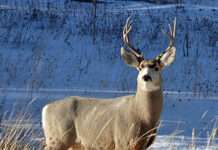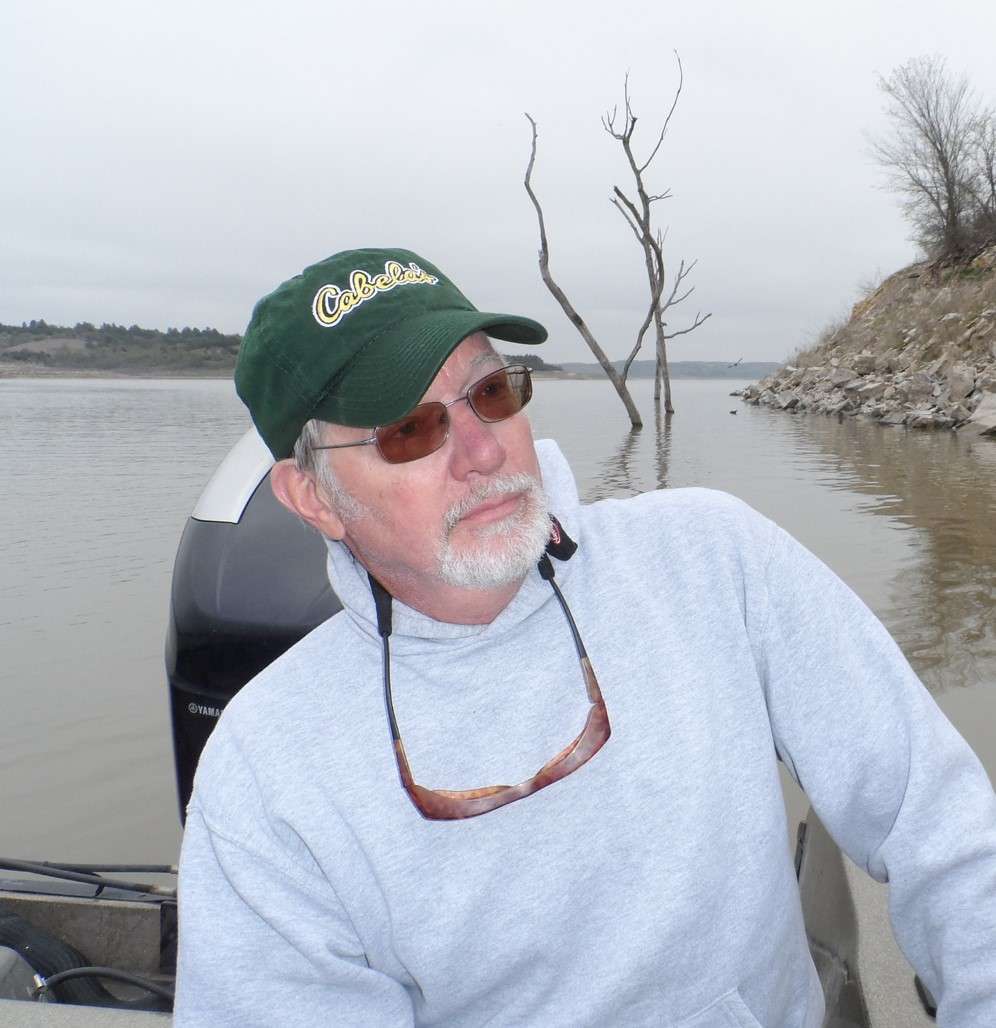In the early 1970’s, in response to the need for an organization representing trappers here in Kansas, the Kansas Fur Harvesters was born, and for 20 years now has sponsored annual fur auctions to help KS trappers market their wild caught fur. Saturday, February 18, I attended this year’s auction at the fairgrounds in Abilene.
Fifteen year old Caitlin Cramer from Longford came with her dad Vance to help market the fur the two of them caught this year. Caitlin has two siblings and Vance says he took all three with him on his trap line when they were still so little they had to be carried. Caitlin says she’s followed her dad around trapping since she was six or eight years old, and continues to go with him because she loves being outdoors and loves helping him trap. This year Caitlin, who also turkey hunts each spring, trapped muskrats on her own for the first time and caught twenty one, which she had with her to sell at the auction.
Years ago there were fur buyers in most communities and a trapper’s annual harvest of pelts could usually be sold with just a short drive. Today, with decreased interest in trapping and much lower prices paid for fur, a two to three hour drive is common to reach the nearest fur buyer. This year’s auction attracted ten fur buyers from all across Kansas, allowing trappers to present their harvest to multiple buyers at the same time in one place and fostering competition for their pelts. Trappers put there furs together in groups of ten or twelve called “lots,” sorting them so the pelts of like – species are grouped together, then each lot is given a number. The lots are displayed on a table and an auctioneer takes bids from the group of buyers until that lot is sold. Buyers look at the size of the pelts, the quality of the fur and in some species, the color. For example, lighter colored gray and silver coyotes are usually the most valuable, and the wider, whiter and more spotted the belly of a bobcat pelt the more valuable it becomes. Prices also depend on which fur is in style and what fur is being used the most and for what.
Dave Sterling from Keats KS came to this year’s auction to sell his eleven beaver pelts. In 2004 Dave was a gunner in a Bradley Fighting Vehicle in Iraq when a rocket propelled grenade (RPG) came through the side of their Bradley, taking off his right hand and eventually causing him to lose most of his right arm. Today Dave wears a prosthetic arm with a hook and is known affectionately by his buddies as “Hook.” A few years back Sterling got some traps from his former employer’s son, and that year, in his first attempt at trapping caught 78 raccoons. Two and a half years ago Sterling got involved with the organization Wounded Warriors United (not affiliated with the Wounded Warrior Project) and began teaching wounded veterans how to trap. Through contributions of equipment from major trapping supply dealers and contributions of money from individuals, Sterling has been able to give traps, trapping equipment and trapping DVD’s to several wounded vets he’s helping. Sterling told me “When veterans get out of the military there is often a big hole when they don’t feel like they belong anymore. Getting guys (and gals) out of the house, off the couch and doing something is huge and can help greatly with the recovery process. As a wounded vet myself, I have different points of view that can help wounded vets with their recovery, so it’s as much therapy for me as it is for them.”
The vast majority of fur from Kansas trappers ultimately ends up at huge fur auctions in Canada. Even the fur purchased by buyers at Saturday’s auction, though it may be resold a few times to other buyers here in the lower forty-eight, will finally end up at one of the large Canadian auctions houses. Where our local auctions attract buyers from all across the state, those immense auctions attract buyers from around the world. China, Russia, Italy and North & South Korea all buy fur there; some because that’s where the big garment manufacturers are that use fur, some because wearing natural fur in their country is a status symbol and others because they know that real natural fur keeps them warmer than anything else. While global buyer’s presence at those auctions creates competition for our wild caught fur, the downside is that prices they are willing to pay are affected by everything from the severity of their countries winter to the state of their economy. For example, sanctions placed against Russia by the US have dampened Russia’s willingness to purchase our wild fur at those auctions, and have drastically lowered the prices they’re willing to pay.
Matt Peak, furbearer biologist for the state of Kansas says that in years of good fur prices, wild caught Kansas fur can bring around one million dollars to the Kansas economy. Fur prices have been very low for a few years now so that number has been much lower. 1,446 pelts sold at Saturday’s auction for a total of $20,512. Bobcat pelts were the most valuable, averaging nearly $80, and coyote pelts went fairly well averaging just over $20. For several years running, beaver fur prices have been some of the lowest, and Dave Sterling’s eleven beaver pelts brought him only $42. By comparison muskrat prices have been reasonable and Caitlin’s much smaller muskrat pelts fetched her $55, still not much for all the work she put into catching them.
Some people around the country make a good living as damage control trappers, removing lamb and calf killing coyotes, or trapping beavers that flood valuable farm land, but in this day and age, trapping merely for the fur is not a money-making proposition. But trapping is not all about the money. It’s about crisp fall mornings and beautiful orange sunrises. It’s about figuring out how to match wits with God’s critters. Trapping is yet another way to Explore Kansas Outdoors!
Steve can be contacted by email at [email protected]




